Formerless Coil Construction
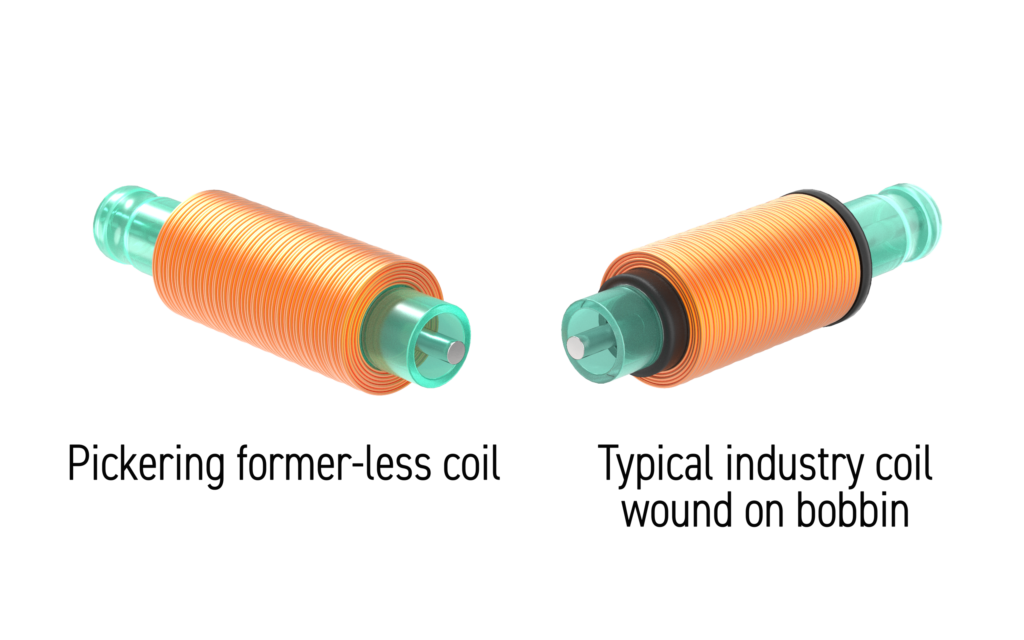
In the realm of reed relays, the reed switch is a critical component. However, the proper and efficient operation of the switch heavily depends on the coil. Without optimal coil performance, the switch may not achieve its best functionality. There are two main options for reed relay coils: bobbin-wound and formerless (self-supporting). While bobbin coils are more commonly used due to their lower cost, formerless coils, despite requiring specialized wires and winding machines, offer significant advantages. Understanding how a reed switch operates can help explain these benefits.
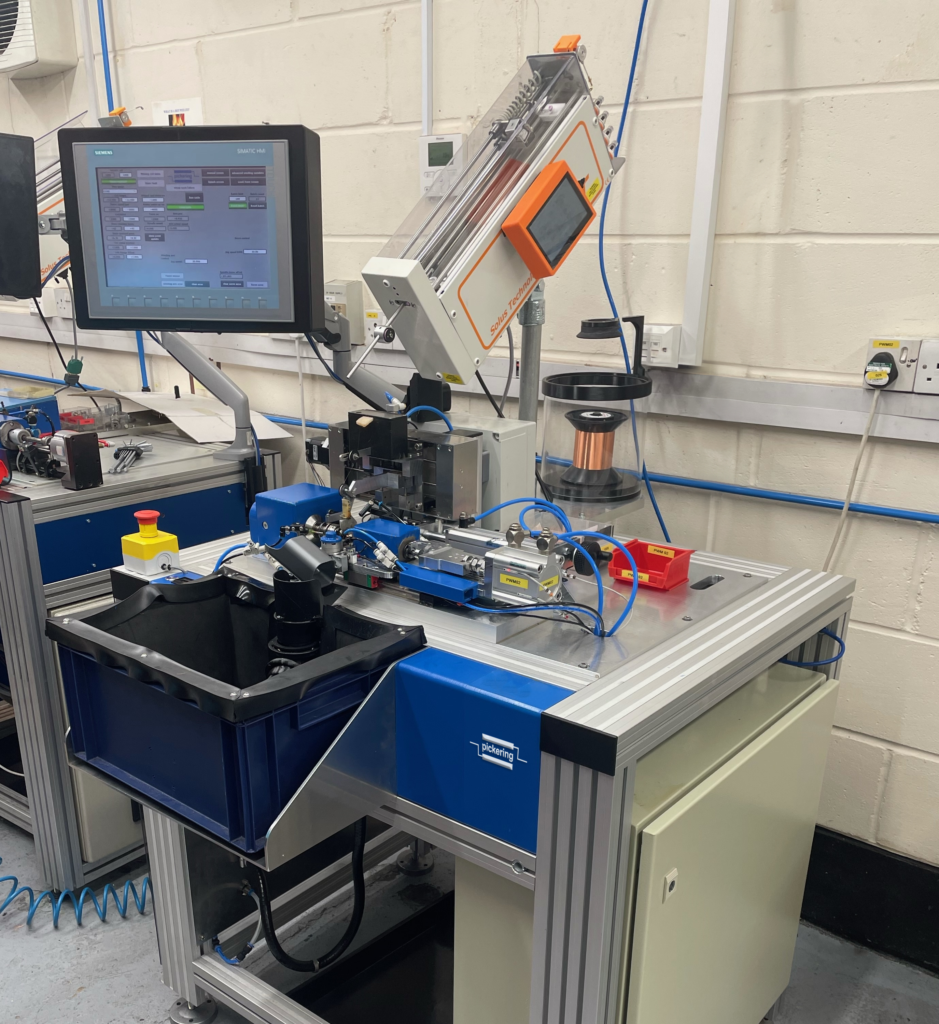
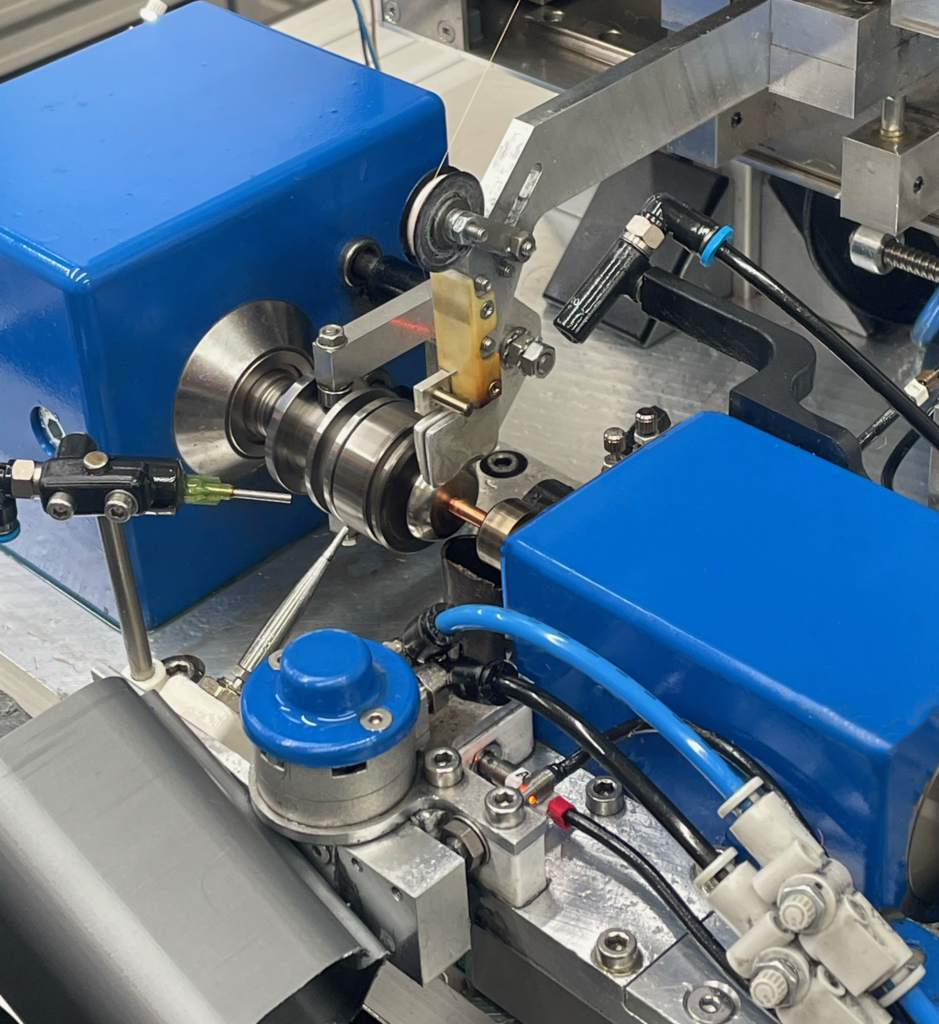
Pickering’s coil winding machines in action. Fun fact; our coil winding machines were originally used by Swiss watchmakers for critical timekeeping components. These machines needed high precision to handle delicate wires and ensure consistent tension in the coils, reflecting the meticulous standards of Swiss watchmaking (and Pickering reed relays!).
Understanding Reed Switch Sensitivity and Coil Drive
A reed switch’s sensitivity is measured in Ampere Turns (AT), which represents the magnetic field strength required to operate the switch. A higher AT value indicates a less sensitive reed switch that needs a stronger magnetic field to activate. The primary factor determining the AT value is the gap between the open contacts: the larger the gap, the higher the AT value, and the stronger the required magnetic field.
For optimal reed switch performance, it is crucial to optimize the coil drive. A coil generating a magnetic field equal to the reed switch’s AT value would result in sluggish operation and high, unstable contact resistance. Increasing the magnetic field (overdrive) brings the contacts together more quickly and with greater force, typically requiring overdrive greater than 20% for stable operation.
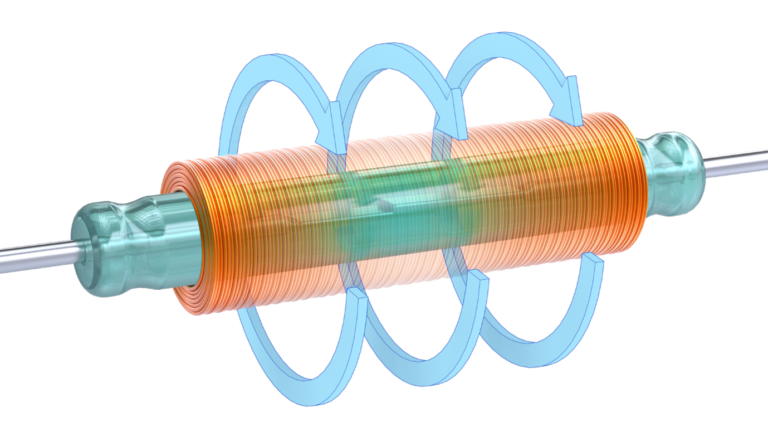
The Role of Higher AT Values in Reed Switch Performance
A reed switch with a higher AT value requires a stronger magnetic field to operate, which, when removed, provides a stronger restoring force. This stronger force is beneficial when hot-switching voltages and currents, or mild capacitive inrush, that can produce small amounts of melted plating material, potentially creating minute, or micro welds. These welds are more easily separated by a stronger restoring force, ensuring reliable operation. Conversely, very low AT reed switches with weaker restoring forces can experience issues with these micro welds, potentially leading to contacts remaining closed or significantly increased release times.
The Coil’s Contribution to Reed Relay Efficiency
Ideally, reed relays would use the highest AT value reed switches for their superior restoring forces. However, practical constraints, such as coil resistance and power supply limitations, necessitate a balance. The magnetic field generated by a coil is determined by the current flowing through it multiplied by the number of turns. For relays with a nominal voltage, resistance—determined by the wire diameter and number of turns—controls the current. Therefore, efficient coil design within the constraints of relay package size is essential for optimal operation of higher AT reed switches.
Advantages of Formerless Coils
Formerless coils offer substantial benefits over bobbin-wound coils. A cross-section comparison reveals that formerless coils provide more space for wire, allowing for greater magnetic drive at the same coil resistance. Another advantage is, with the switch against the inside of the coil gives greater magnetic efficiency, especially when coupled with magnetic screening. This increased efficiency enables the use of higher AT switches with stronger restoring forces, while maintaining good overdrive levels for stable operation.
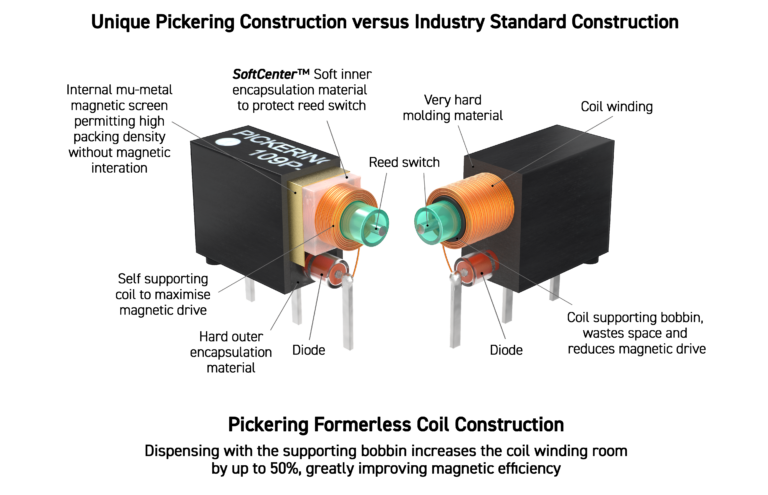
Conclusion
Formerless coil construction in Pickering reed relays offers significant benefits that enhance performance and reliability. By combining formerless coils and magnetic screening enables the use of higher AT reed switches, ensuring stronger restoring forces, better overdrive, and more stable operation. When selecting reed relays for demanding applications, it’s crucial to consider the coil construction to ensure optimal performance. Choose Pickering reed relays with formerless coils for superior reliability and efficiency in your critical applications.






